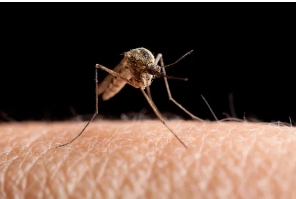A virus spread by bugs has sickened over 20 individuals traveling back to the United States from Cuba in recent months, according to a report released by federal health officials on Tuesday. They all suffered from sloth fever, a condition caused by the Oropouche virus.
There is no proof that it is spreading throughout the US and no one has died from it. However, authorities are alerting American physicians to watch out for the virus among visitors from South America and Cuba.

The sickness and the cause of the alarm are described below:
Oropouche virus: what is it?
The virus known as Orophouche is indigenous to tropical forests. It was called after a local hamlet and wetlands when it was initially discovered in 1955 in a 24-year-old forest worker on the island of Trinidad.
The reason it’s commonly referred to as “sloth fever” is that when researchers initially discovered the virus in a three-toed sloth, they assumed sloths played a significant role in its propagation from insects to other animals.
How is the Oropouche virus transmitted?
Humans get the virus via some kinds of mosquitoes and from tiny biting insects known as midges. Although there is no evidence of person-to-person transmission, humans are thought to have contributed to the virus’s spread to towns and cities by visiting wooded regions and being infected.
To what extent have cases occurred?
Large-scale outbreaks in Amazonian regions, where the virus was known to reside, as well as in new places in South America and the Caribbean, were traced back to it starting late last year. There have been reports of about 8,000 locally acquired cases in Bolivia, Brazil, Colombia, Cuba, and Peru.
It has been diagnosed in a few tourists in Europe and the United States. Twenty of the 21 U.S. cases that have been recorded so far—one in New York and the other in Florida—had all been in Cuba, according to the Centers for Disease Control and Prevention on Tuesday. Prior to this, European health officials claimed to have discovered 19 instances, almost all of which were tourists.
What are the signs and how are they treated?
The symptoms of dengue, Zika, and malaria, among other tropical illnesses, may resemble each other. Common symptoms include fever, headaches, and muscular pains. Diarrhea, nausea, vomiting, and rash are also experienced by some infected individuals.
One in twenty people may get more serious symptoms such as bleeding, meningitis, or encephalitis, while other patients experience recurrent symptoms. Although there have been recent cases of fatalities in Brazil involving two healthy young individuals, it is seldom lethal.
Neither vaccinations nor medications are available to address the symptoms of infections.
Exist any additional worries?
Authorities in Brazil are looking into claims that illnesses might be transferred from a mother to her fetus, which could be a terrifying recurrence of the Zika outbreaks that occurred over 10 years ago.
Pregnant women are advised by the CDC to refrain from non-essential travel to Cuba, and all visitors are advised to take precautions against insect bites, such as using insect repellent and donning long sleeves and long trousers.






